Want a full list of all the yoga moves to help you with your practice?
Our list has a lot of different asanas, from easy ones for beginners to more difficult ones. There is both a Sanskrit name and an English name for each pose. This makes it easy to learn and remember the different asanas.
Learn the Sanskrit names for yoga Poses to get inside the practice! With our complete guide to Sanskrit yoga poses, you can deepen your practice, connect with tradition, and become more aware. Let's Explore
Table of Contents
Standing Yoga poses
Standing poses are the basis of many yoga styles and can help you get stronger, more balanced, and more focused. You can strengthen your connection to the tradition and improve your practice by learning the Sanskrit names of these poses. Here is a full list of all the standing yoga poses and their Sanskrit names. Each one is good for your body and mind in its own way.
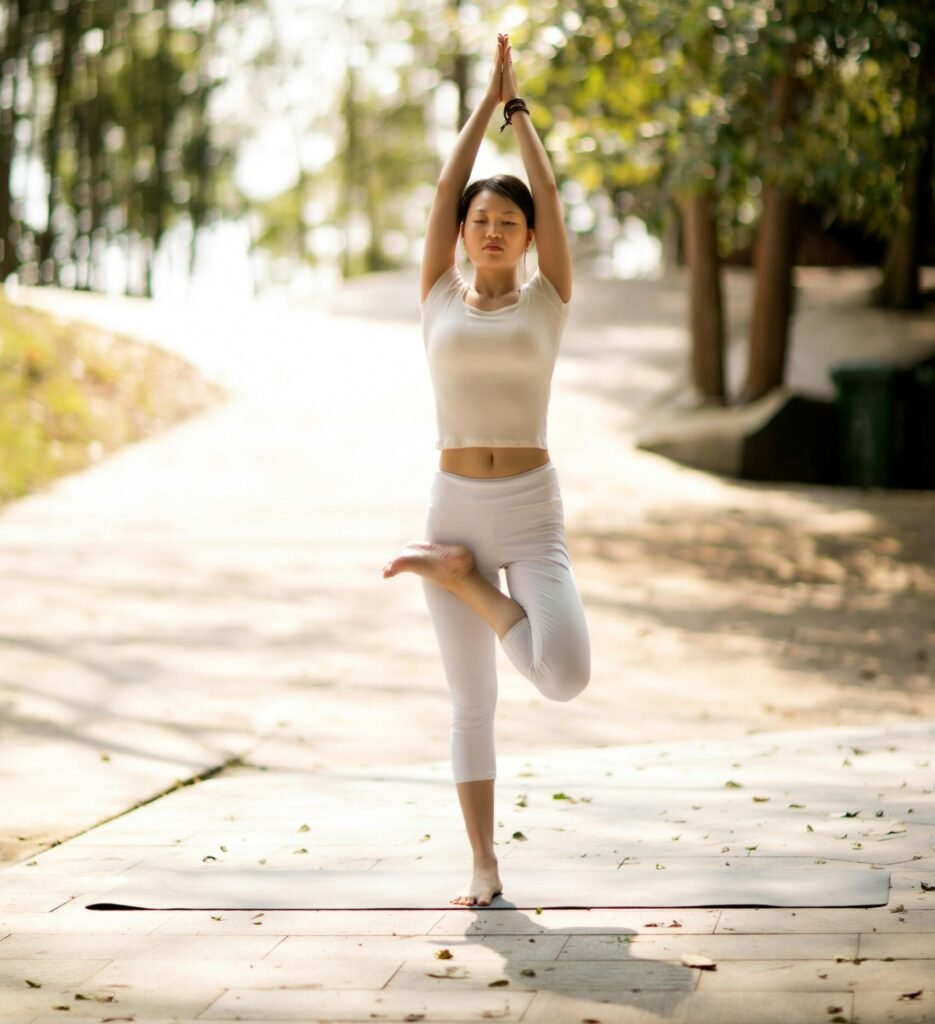
- Mountain Pose – Tadasana
- Chair Pose – Utkatasana
- Warrior I – Virabhadrasana I
- Warrior II – Virabhadrasana II
- Warrior III – Virabhadrasana III
- Triangle Pose – Trikonasana
- Extended Side Angle Pose – Utthita Parsvakonasana
- Half Moon Pose – Ardha Chandrasana
- Revolved Triangle Pose – Parivrtta Trikonasana
- Standing Forward Bend – Uttanasana
- Wide-Legged Forward Bend – Prasarita Padottanasana
- Tree Pose – Vrikshasana
- Eagle Pose – Garudasana
- Extended Hand to Big Toe Pose – Utthita Hasta Padangusthasana
- Standing Split – Urdhva Prasarita Eka Padasana
- Intense Side Stretch Pose – Parsvottanasana
- Revolved Side Angle Pose – Parivrtta Parsvakonasana
- Lord of the Dance Pose – Natarajasana
- Standing Backbend – Anuvittasana
- High Lunge – Ashta Chandrasana
- Goddess Pose – Utkata Konasana
- Standing Figure Four Pose – Eka Pada Utkatasana
- Five-Pointed Star Pose – Utthita Tadasana
- Revolved Chair Pose – Parivrtta Utkatasana
- Warrior IV Pose – Virabhadrasana IV (less common)
- Revolved Half Moon Pose – Parivrtta Ardha Chandrasana
- Side Plank Pose – Vasisthasana (often considered a standing pose for its one-legged balance)
- Hand to Big Toe Pose – Padangusthasana (when performed standing)
- Horse Pose – Vatayanasana
- Standing Half Forward Bend – Ardha Uttanasana
This list covers a comprehensive range of standing poses found in yoga practice, helping to enhance strength, balance, and flexibility.
Forward-fold Yoga Poses
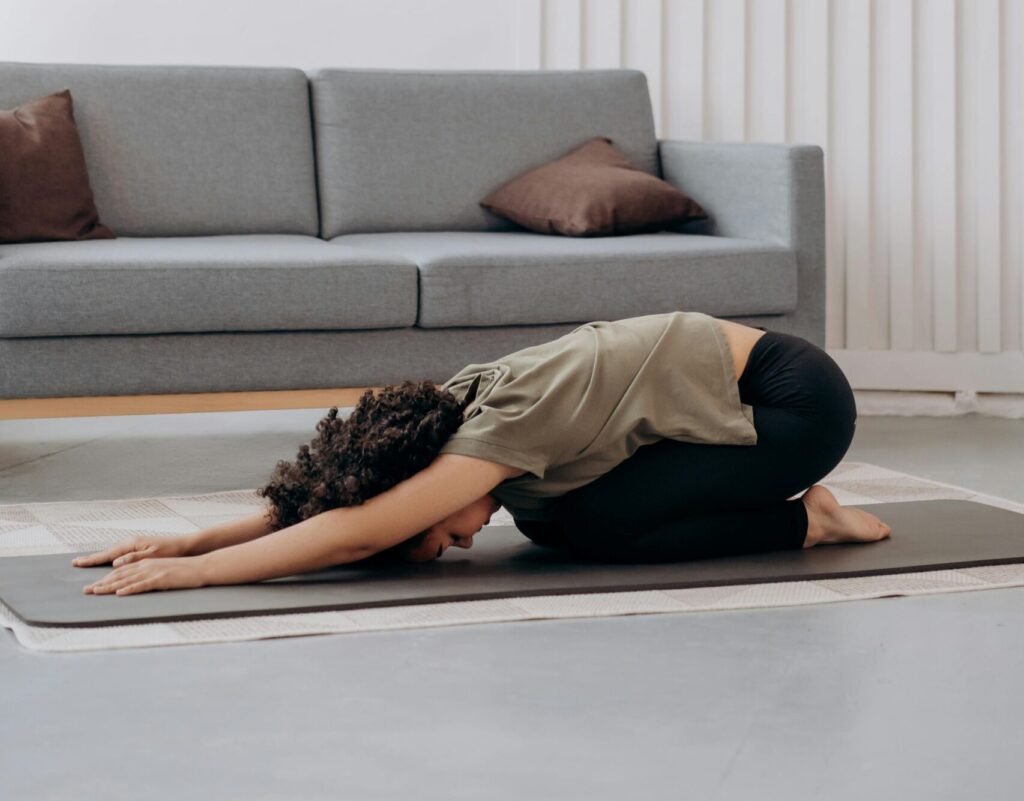
In a yoga practice, forward-fold positions are crucial for fostering flexibility, calmness, and reflection. These postures assist to relax the mind and stretch the back of the body, from the hamstrings to the spine. The Sanskrit names for many forward-fold yoga positions are listed below:
- Standing Forward Bend: Uttanasana
- Seated Forward Bend: Paschimottanasana
- Wide-Legged Forward Bend: Prasarita Padottanasana
- Intense Side Stretch Pose: Parsvottanasana
- Head-to-Knee Forward Bend: Janu Sirsasana
- Child’s Pose: Balasana (often considered a forward fold due to the stretch of the back)
- Big Toe Pose: Padangusthasana
- Hand-to-Foot Pose: Padahastasana
- Downward-Facing Dog: Adho Mukha Svanasana (while primarily an inversion, it includes a forward fold aspect)
- Extended Puppy Pose: Uttana Shishosana
- Revolved Head-to-Knee Pose: Parivrtta Janu Sirsasana
- Wide-Angle Seated Forward Bend: Upavistha Konasana
- Standing Split: Urdhva Prasarita Eka Padasana
- Half-Standing Forward Bend: Ardha Uttanasana
- Bound Angle Pose: Baddha Konasana (when performed with a forward bend)
- Reclining Hand-to-Big-Toe Pose: Supta Padangusthasana (when performed in a seated forward fold variation)
- Pyramid Pose: Parsvottanasana
- Deep Forward Fold: Prasarita Padottanasana C (variation with hands clasped behind the back)
These forward-fold poses are integral to enhancing flexibility and calming the mind. Each pose, with its Sanskrit name, connects you to the ancient traditions of yoga while providing numerous physical and mental benefits.
Backbends Poses
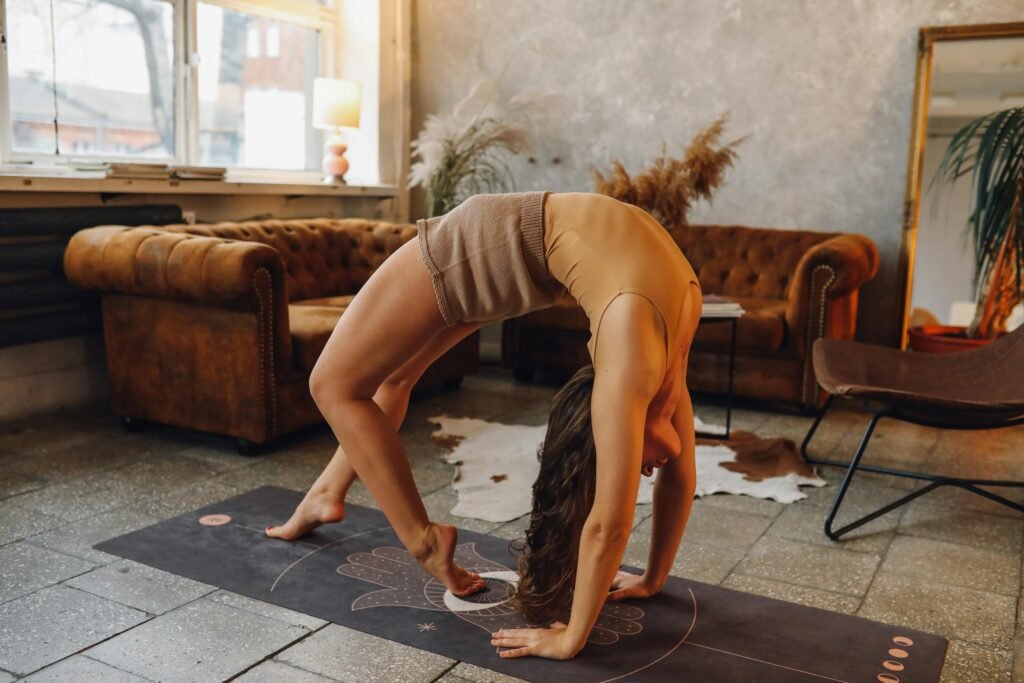
Poses that open the chest, lengthen the front of the body, and strengthen the back are known as backbends. By energizing the body and mind, these positions can offset the negative effects of sedentary lives and bad posture. The Sanskrit names for all of the backbend yoga positions are listed below:
- Cobra Pose – Bhujangasana
- Upward-Facing Dog – Urdhva Mukha Svanasana
- Camel Pose – Ustrasana
- Bow Pose – Dhanurasana
- Wheel Pose – Urdhva Dhanurasana (also known as Chakrasana)
- Bridge Pose – Setu Bandhasana
- Locust Pose – Salabhasana
- Half Locust Pose – Ardha Salabhasana
- Sphinx Pose – Salamba Bhujangasana
- King Pigeon Pose – Kapotasana
- Fish Pose – Matsyasana
- Wild Thing Pose – Camatkarasana
- Dancer’s Pose – Natarajasana
- Standing Backbend – Anuvittasana
- Upward Bow Pose – Urdhva Dhanurasana
- Pigeon Pose – Eka Pada Rajakapotasana
- One-Legged King Pigeon Pose II – Eka Pada Rajakapotasana II
- Full Wheel Pose – Chakrasana
- Lord of the Dance Pose – Natarajasana
- Upward Plank Pose – Purvottanasana
- Reverse Tabletop Pose – Ardha Purvottanasana
- Frog Pose – Mandukasana (when performed as a backbend)
- Reverse Warrior Pose – Viparita Virabhadrasana (incorporates a backbend)
- Extended Puppy Pose – Uttana Shishosana (includes a gentle backbend)
- Wild Thing Pose – Camatkarasana
- Reclining Hero Pose – Supta Virasana
- King Cobra Pose – Raja Bhujangasana
- Saddle Pose – Supta Vajrasana (Yin Yoga pose)
- Extended Fish Pose – Uttana Padasana
- One-Legged Wheel Pose – Eka Pada Urdhva Dhanurasana
These backbend poses are essential for improving spinal flexibility, opening the chest, and energizing the body. Practicing these poses with their Sanskrit names not only respects the yoga tradition but also enhances your understanding and connection to each asana.
Twists Yoga Postures
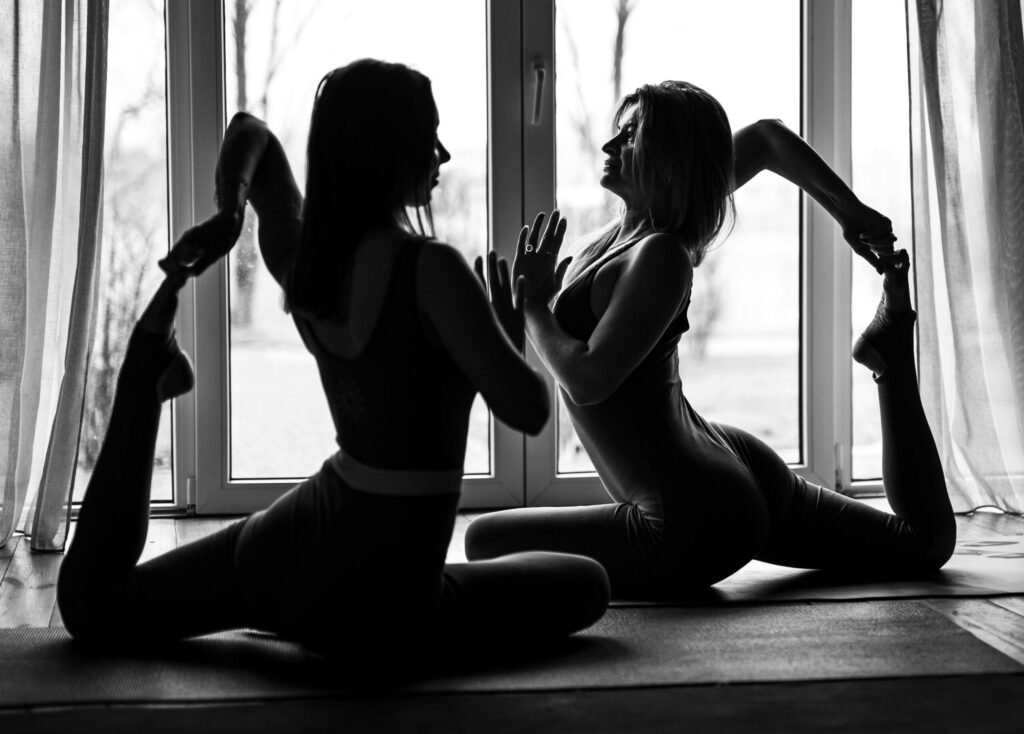
Twist poses are essential for boosting spinal mobility, cleansing the body, and aiding digestion. Additionally, these positions might aid in stress relief and balance development. An extensive list of twist yoga positions, along with their Sanskrit names, is provided below:
- Half Lord of the Fishes Pose – Ardha Matsyendrasana
- Revolved Triangle Pose – Parivrtta Trikonasana
- Revolved Side Angle Pose – Parivrtta Parsvakonasana
- Revolved Chair Pose – Parivrtta Utkatasana
- Supine Spinal Twist – Supta Matsyendrasana
- Seated Spinal Twist – Marichyasana III
- Revolved Head-to-Knee Pose – Parivrtta Janu Sirsasana
- Revolved Hand-to-Big-Toe Pose – Parivrtta Hasta Padangusthasana
- Revolved Half Moon Pose – Parivrtta Ardha Chandrasana
- Revolved Wide-Legged Standing Forward Bend – Parivrtta Prasarita Padottanasana
- Bharadvaja’s Twist – Bharadvajasana I
- Noose Pose – Pasasana
- Eagle Pose – Garudasana (includes a twist of the arms and legs)
- Thread the Needle Pose – Parsva Balasana
- Standing Spinal Twist Pose – Katichakrasana
- Twisted Child’s Pose – Parivrtta Balasana
- Twisted Root Pose – Jathara Parivartanasana
- Seated Twist Pose – Parivrtta Sukhasana
- Lunge Twist Pose – Parivrtta Anjaneyasana
- Sage’s Pose – Marichyasana I
- Twisting Low Lunge – Parivrtta Ashwa Sanchalanasana
- Half Twist Pose – Ardha Matsyendrasana II
- Side Crow Pose – Parsva Bakasana
- Twisting Warrior Pose – Parivrtta Virabhadrasana
These twist poses are beneficial for improving spinal health, enhancing flexibility, and promoting detoxification. Learning the Sanskrit names of these poses helps deepen your practice and understanding of yoga’s rich tradition.
Arm-Balancing Yoga Poses with Their Sanskrit Names
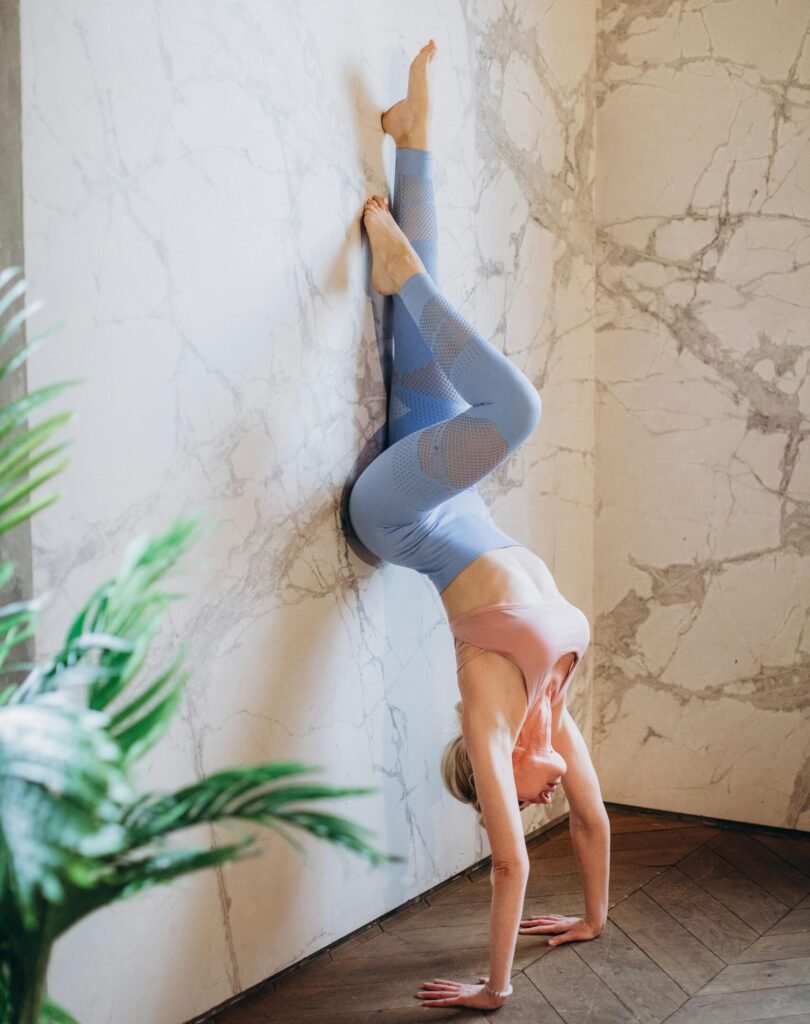
Arm balancing poses are excellent for building upper body strength, improving balance, and boosting confidence. These poses require focus and coordination, engaging multiple muscle groups simultaneously. Here’s a comprehensive list of arm balancing yoga poses with their Sanskrit names:
- Crow Pose – Bakasana
- Side Crow Pose – Parsva Bakasana
- Firefly Pose – Tittibhasana
- Eight-Angle Pose – Astavakrasana
- Peacock Pose – Mayurasana
- Flying Pigeon Pose – Eka Pada Galavasana
- Flying Lizard Pose – Utthan Pristhasana
- Hummingbird Pose – Gandha Bherundasana
- Scale Pose – Tolasana
- Dragonfly Pose – Maksikanagasana
- Koundinyasana I – Eka Pada Koundinyasana I
- Koundinyasana II – Eka Pada Koundinyasana II
- One-Legged Crow Pose – Eka Pada Bakasana
- One-Legged Side Crow Pose – Eka Pada Parsva Bakasana
- Grasshopper Pose – Parsva Bhuja Dandasana
- Handstand – Adho Mukha Vrksasana
- Forearm Stand – Pincha Mayurasana
- Firefly Pose – Tittibhasana
- Fallen Angel Pose – Devaduuta Panna Asana
- Visvamitrasana – Visvamitrasana
- Sage Pose – Vasisthasana
- Side Plank Pose – Vasisthasana (including variations)
- Scissors Pose – Eka Pada Koundinyasana I
- Lolasana – Pendant Pose
- Bhujapidasana – Shoulder-Pressing Pose
- Crane Pose – Bakasana (often used interchangeably with Crow Pose, though typically considered a more advanced variation)
These arm balancing poses challenge your strength, balance, and focus, helping you develop a powerful and resilient practice. Understanding the Sanskrit names of these poses connects you to the ancient traditions of yoga while enhancing your physical and mental capabilities.
Inversion Yoga Poses with Their Sanskrit Names
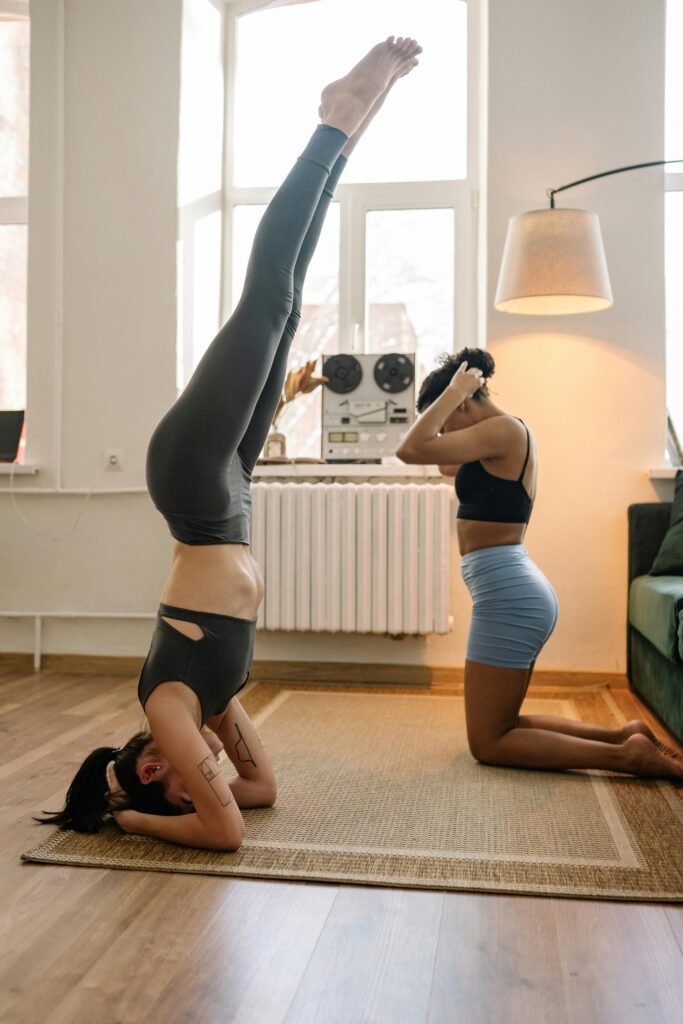
Inversion poses are excellent for reversing blood flow, enhancing circulation, and improving balance and strength. These poses can invigorate the body, calm the mind, and offer a new perspective. Here’s a comprehensive list of inversion yoga poses with their Sanskrit names:
- Headstand – Sirsasana
- Supported Headstand – Salamba Sirsasana
- Forearm Stand – Pincha Mayurasana
- Handstand – Adho Mukha Vrksasana
- Shoulder Stand – Sarvangasana
- Supported Shoulder Stand – Salamba Sarvangasana
- Plow Pose – Halasana
- Feathered Peacock Pose – Pincha Mayurasana
- Legs Up the Wall Pose – Viparita Karani
- Dolphin Pose – Ardha Pincha Mayurasana
- Scorpion Pose – Vrschikasana
- Tripod Headstand – Sirsasana II
- Lotus in Headstand – Padma Sirsasana
- Lotus in Shoulder Stand – Padma Sarvangasana
- Side Plank Pose – Vasisthasana (when legs are inverted)
- Flying Splits – Eka Pada Koundinyasana I (includes an inversion aspect)
- Peacock Pose – Mayurasana (considered an arm balance with inversion elements)
- Bound Angle Pose – Baddha Konasana (when performed in a supported inversion)
- Reverse Plank Pose – Purvottanasana (when legs and torso are inverted)
- Reclining Hero Pose – Supta Virasana (when combined with an inversion)
These inversion poses provide numerous benefits for both body and mind, including improved circulation, enhanced balance, and a sense of calm and focus. Learning the Sanskrit names of these poses deepens your connection to the rich tradition of yoga while expanding your practice.
Seated Yoga Poses with Their Sanskrit Names
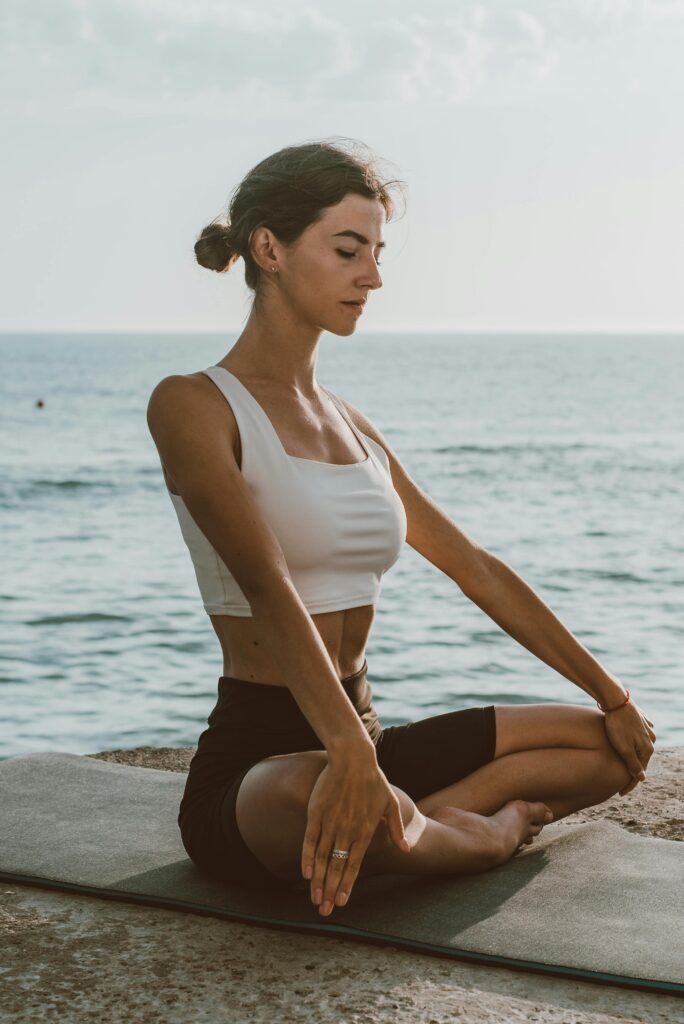
Seated poses are fundamental in yoga practice, promoting flexibility, relaxation, and introspection. These poses often focus on stretching the hips, hamstrings, and spine, making them ideal for calming the mind and preparing for meditation. Here’s a comprehensive list of seated yoga poses with their Sanskrit names:
- Easy Pose – Sukhasana
- Lotus Pose – Padmasana
- Bound Angle Pose – Baddha Konasana
- Staff Pose – Dandasana
- Seated Forward Bend – Paschimottanasana
- Head-to-Knee Pose – Janu Sirsasana
- Revolved Head-to-Knee Pose – Parivrtta Janu Sirsasana
- Seated Wide-Legged Forward Bend – Upavistha Konasana
- Cow Face Pose – Gomukhasana
- Hero Pose – Virasana
- Reclining Hero Pose – Supta Virasana
- Fire Log Pose – Agnistambhasana
- Seated Spinal Twist – Ardha Matsyendrasana
- Sage Pose – Marichyasana
- Thunderbolt Pose – Vajrasana
- Half Lotus Pose – Ardha Padmasana
- Reclining Bound Angle Pose – Supta Baddha Konasana
- Reclining Hand-to-Big-Toe Pose – Supta Padangusthasana
- Wide-Angle Seated Forward Bend – Upavistha Konasana
- Boat Pose – Navasana
- Tortoise Pose – Kurmasana
- Frog Pose – Mandukasana
- Child’s Pose – Balasana
- Revolved Seated Forward Bend – Parivrtta Paschimottanasana
- Half Lord of the Fishes Pose – Ardha Matsyendrasana
These seated poses are perfect for enhancing flexibility, promoting relaxation, and encouraging a meditative state. Understanding their Sanskrit names deepens your connection to the practice and honors the yoga tradition.
Prone Yoga Poses with Their Sanskrit Names
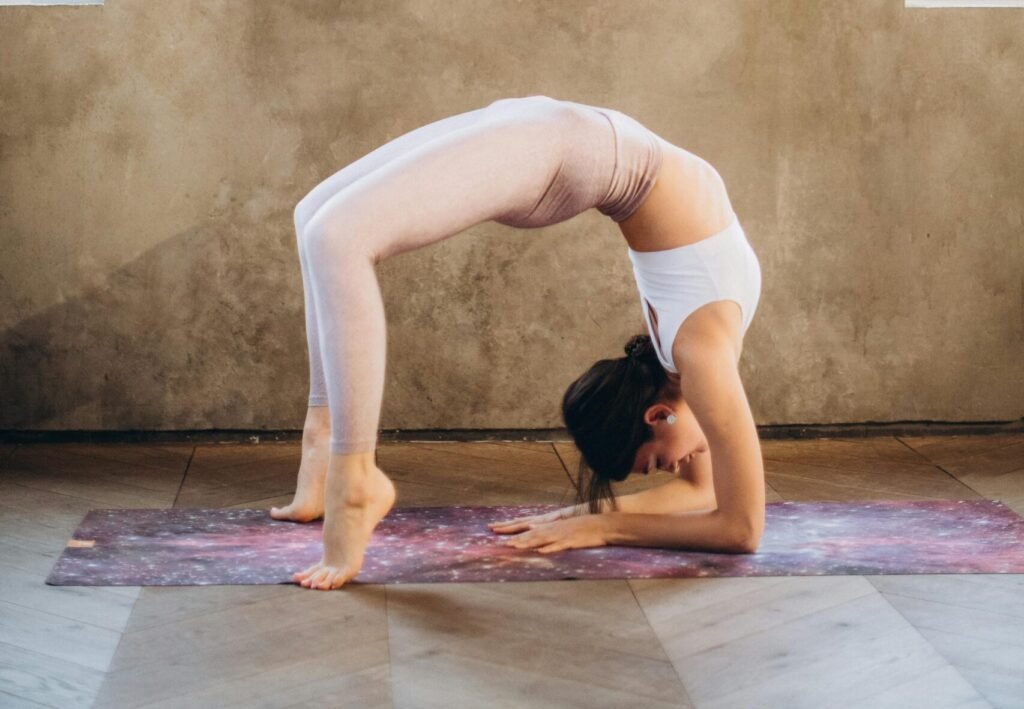
Prone poses, performed lying on the stomach, are excellent for strengthening the back, opening the chest, and improving overall flexibility. These poses often focus on backbends and core strength, providing a counterbalance to forward bending poses. Here’s a comprehensive list of prone yoga poses with their Sanskrit names:
- Cobra Pose – Bhujangasana
- Locust Pose – Salabhasana
- Sphinx Pose – Salamba Bhujangasana
- Bow Pose – Dhanurasana
- Upward-Facing Dog – Urdhva Mukha Svanasana
- Superman Pose – Viparita Shalabhasana
- Flying Locust Pose – Viparita Salabhasana
- Half Frog Pose – Ardha Bhekasana
- Full Frog Pose – Bhekasana
- Crocodile Pose – Makarasana
- King Cobra Pose – Raja Bhujangasana
- Baby Cobra Pose – Ardha Bhujangasana
- Extended Puppy Pose – Uttana Shishosana (often starts from prone)
- Reverse Plank Pose – Purvottanasana (transition from prone)
- Tiger Pose – Vyaghrasana
- Swimming Pose – Nadi Shodhana (variation of Salabhasana with alternating leg and arm lifts)
- Ganda Bherundasana – Formidable Face Pose
- Flying Pigeon Pose – Eka Pada Galavasana (transition from prone)
- Upward Plank Pose – Purvottanasana (transition from prone)
These prone poses are great for strengthening the back muscles, improving posture, and increasing overall flexibility. Understanding their Sanskrit names not only honors the yoga tradition but also helps deepen your practice.
Supine Yoga Poses with Their Sanskrit Names
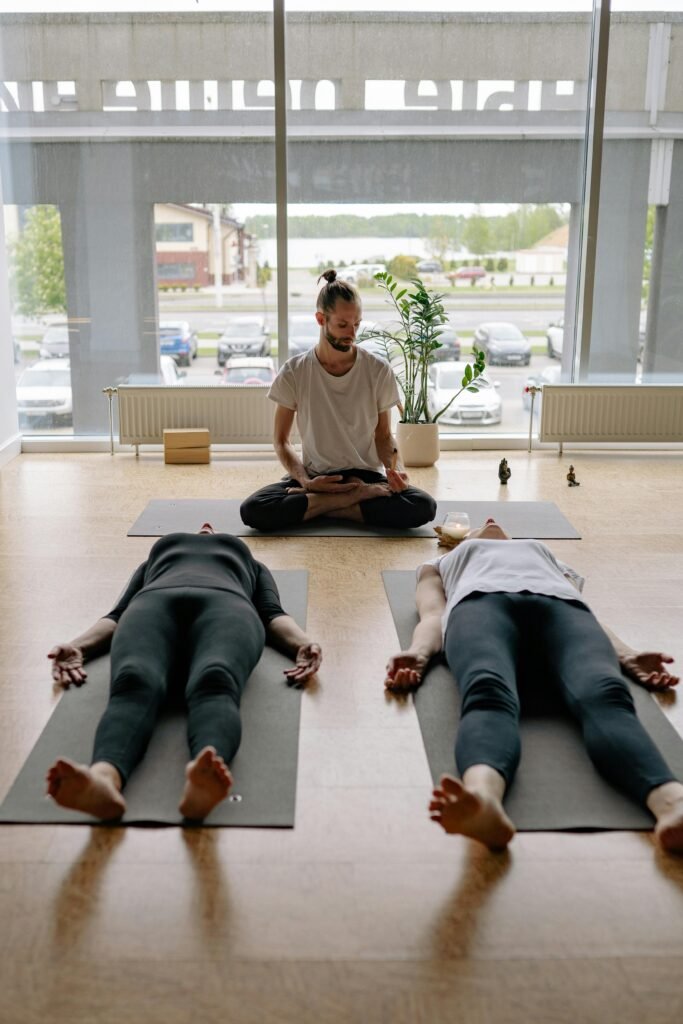
Supine poses, performed lying on the back, are excellent for relaxation, stretching the spine and hamstrings, and promoting overall flexibility. These poses often focus on gentle stretches and deep relaxation, making them ideal for winding down a practice or preparing for sleep. Here’s a comprehensive list of supine yoga poses with their Sanskrit names:
- Corpse Pose – Savasana
- Reclining Bound Angle Pose – Supta Baddha Konasana
- Reclining Hand-to-Big-Toe Pose – Supta Padangusthasana
- Bridge Pose – Setu Bandhasana
- Reclining Hero Pose – Supta Virasana
- Happy Baby Pose – Ananda Balasana
- Supine Spinal Twist – Supta Matsyendrasana
- Legs Up the Wall Pose – Viparita Karani
- Wind-Relieving Pose – Pavanamuktasana
- Fish Pose – Matsyasana
- Reclining Hand-to-Big-Toe Pose – Supta Hasta Padangusthasana
- Reclining Pigeon Pose – Supta Kapotasana
- Reclining Twist Pose – Jathara Parivartanasana
- Reclining Butterfly Pose – Supta Baddha Konasana
- Reclining Deer Pose – Supta Mrigasana
- Reclining Cow Face Pose – Supta Gomukhasana
- Reclining Eagle Pose – Supta Garudasana
- Leg Reclining Mountain Pose – Supta Tadasana
- Supported Bridge Pose – Setu Bandha Sarvangasana (using props)
- Reclining Big Toe Hold – Supta Padangusthasana II (variation with leg out to the side)
These supine poses are perfect for deep relaxation, gentle stretching, and preparing for meditation or sleep. Knowing their Sanskrit names helps deepen your practice and connects you to the rich tradition of yoga.
Core Yoga Poses with Their Sanskrit Names
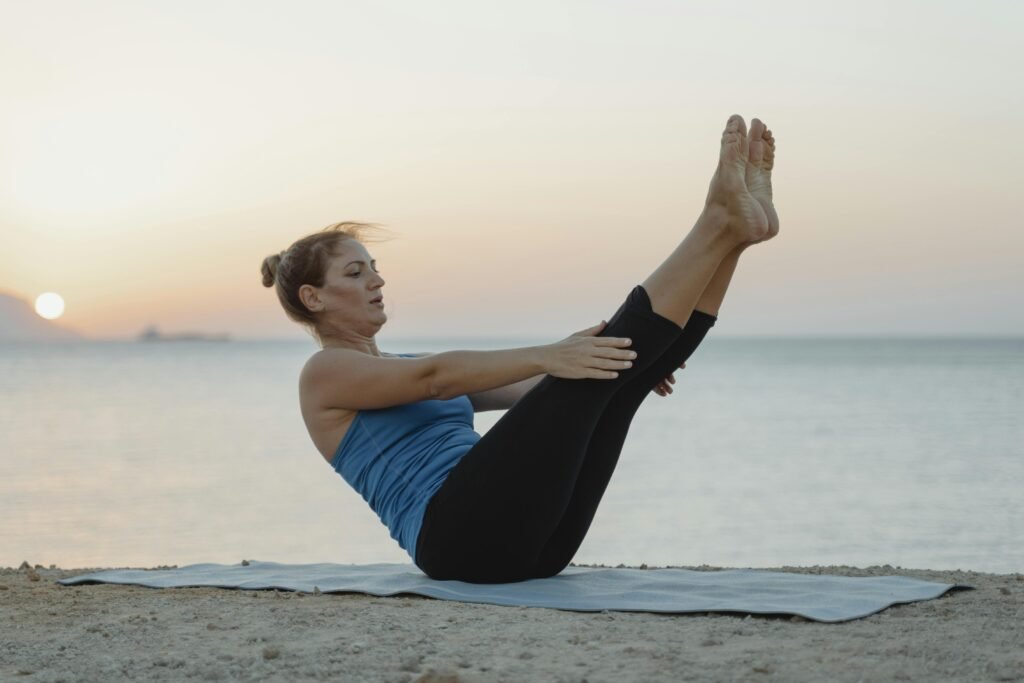
Core exercises in yoga are essential for building strength, stability, and balance. These poses target the muscles of the abdomen, back, and pelvis, creating a solid foundation for all other movements. Here’s a comprehensive list of core yoga poses with their Sanskrit names:
- Boat Pose – Navasana
- Half Boat Pose – Ardha Navasana
- Plank Pose – Phalakasana
- Side Plank Pose – Vasisthasana
- Four-Limbed Staff Pose – Chaturanga Dandasana
- Upward Plank Pose – Purvottanasana
- Downward-Facing Dog Pose – Adho Mukha Svanasana
- Dolphin Pose – Ardha Pincha Mayurasana
- Reclining Hand-to-Big-Toe Pose – Supta Padangusthasana
- Wind-Relieving Pose – Pavanamuktasana
- Locust Pose – Salabhasana
- Bridge Pose – Setu Bandhasana
- Warrior III Pose – Virabhadrasana III
- Chair Pose – Utkatasana
- Hand-to-Big-Toe Pose – Utthita Hasta Padangusthasana
- Extended Side Angle Pose – Utthita Parsvakonasana
- Crow Pose – Bakasana
- Half Moon Pose – Ardha Chandrasana
- Revolved Triangle Pose – Parivrtta Trikonasana
- Eagle Pose – Garudasana (focuses on core balance)
- Camel Pose – Ustrasana (engages core to stabilize backbend)
- Firefly Pose – Tittibhasana
- Headstand – Sirsasana (requires core strength for balance)
- Forearm Stand – Pincha Mayurasana
- Handstand – Adho Mukha Vrksasana
These core yoga poses help build a strong, stable center, which is crucial for overall physical health and the performance of more advanced yoga asanas. Understanding their Sanskrit names enriches your practice and connects you more deeply with the traditions of yoga.
Pranayama Exercises with Their Sanskrit Names
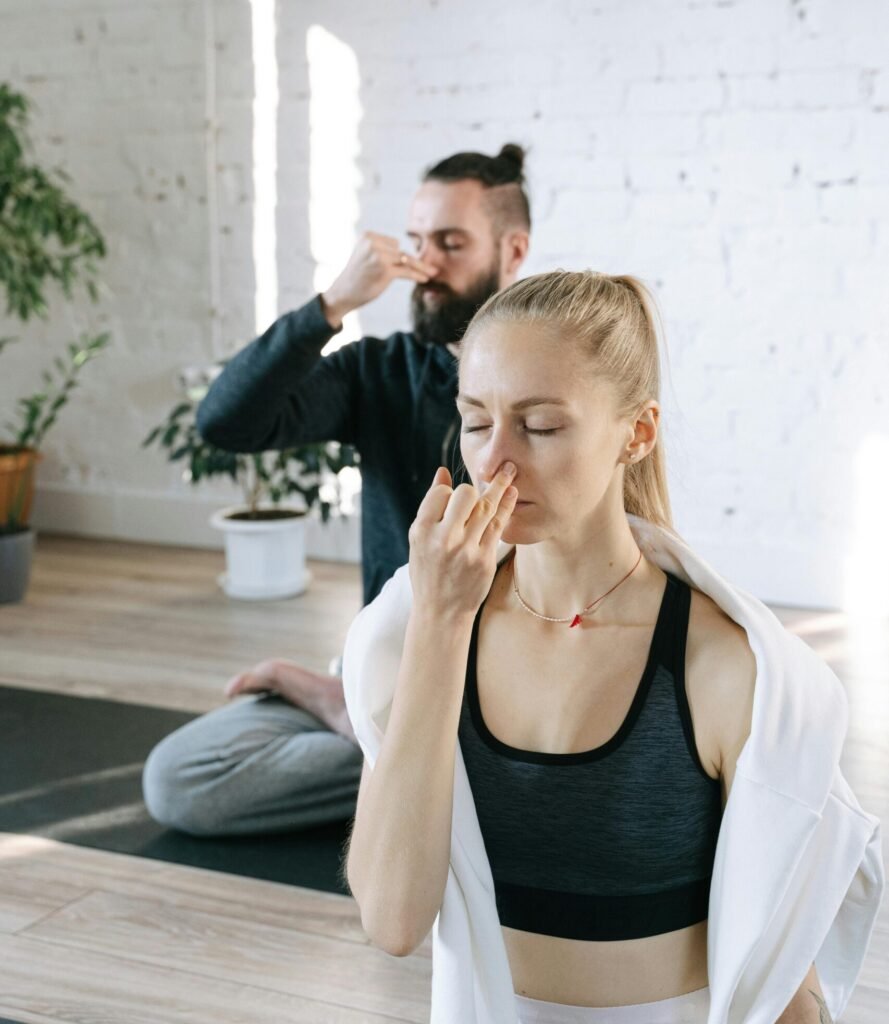
Pranayama, the practice of breath control, is a fundamental aspect of yoga. These exercises are designed to enhance respiratory function, increase mindfulness, and promote overall well-being. Here’s a comprehensive list of pranayama exercises with their Sanskrit names:
- Alternate Nostril Breathing – Nadi Shodhana Pranayama
- Victorious Breath – Ujjayi Pranayama
- Skull Shining Breath – Kapalabhati Pranayama
- Bee Breath – Bhramari Pranayama
- Cooling Breath – Sheetali Pranayama
- Humming Bee Breath – Bhramari Pranayama
- Bellows Breath – Bhastrika Pranayama
- Ocean Breath – Ujjayi Pranayama
- Lion’s Breath – Simhasana Pranayama
- Equal Breathing – Sama Vritti Pranayama
- Three-Part Breath – Dirga Pranayama
- Breath of Fire – Agni Prasana
- Left Nostril Breathing – Chandra Bhedana Pranayama
- Right Nostril Breathing – Surya Bhedana Pranayama
- Extended Exhalation Breath – Rechaka Pranayama
- Extended Inhalation Breath – Puraka Pranayama
- Retention Breath – Kumbhaka Pranayama
- Long Exhale Breath – Rechaka Pranayama
- Complete Breath – Purna Swara Pranayama
- Shining Skull Breath – Kapalabhati Pranayama
These pranayama exercises offer various benefits, including stress reduction, improved lung capacity, enhanced concentration, and a greater sense of calm. Learning the Sanskrit names of these techniques connects you to the ancient roots of yoga and enriches your practice.
Kriyas with Their Sanskrit Names

Kriyas are cleansing techniques in yoga that help purify the body and mind, promoting overall health and well-being. These practices are designed to detoxify the internal organs, clear energy pathways, and prepare the body for deeper spiritual practices. Here’s a comprehensive list of kriyas with their Sanskrit names:
- Stomach Cleansing – Dhauti
- Water Cleansing – Jala Dhauti
- Cloth Cleansing – Vastra Dhauti
- Vomiting Cleansing – Vamana Dhauti
- Nasal Cleansing – Neti
- Water Cleansing – Jala Neti
- Thread Cleansing – Sutra Neti
- Colon Cleansing – Basti
- Water Cleansing – Jala Basti
- Dry Cleansing – Sushka Basti
- Stomach Churning – Nauli
- Middle Nauli – Madhyana Nauli
- Right Nauli – Dakshina Nauli
- Left Nauli – Vama Nauli
- Gazing Cleansing – Trataka
- Rectal Cleansing – Agnisar Kriya
- Tongue Cleansing – Jihva Dhauti
- Skull Shining Breath – Kapalabhati
- Internal Cleansing – Shankhaprakshalana
- Abdominal Lock – Uddiyana Bandha
These kriyas are integral to traditional yoga practices, aiding in physical purification and mental clarity. Understanding and practicing these techniques, along with their Sanskrit names, connects you to the ancient traditions of yoga and enhances your overall practice.
Conclusion
You can take a more complete approach to your yoga journey if you learn about all the different types of poses and practices, such as standing and sitting poses, arm balances, core exercises, pranayamas, and kriyas. Each group of poses is good for different things, like making you stronger, more flexible, smarter, and more spiritual.
Not only does learning the Sanskrit names of these poses show respect for the old practice of yoga, but it also helps you get better at it. It helps you understand and appreciate this practice better by connecting you with its historical and cultural roots.
Adding different yoga poses and breathing exercises to your routine can help you make your practice more balanced and satisfying. Whether you want to get stronger, more flexible, better control your breath, or clean out your body, each part of yoga has its own benefits that work together to make you feel better overall.
As you keep doing yoga, keep in mind that it’s not just about the poses; it’s also about becoming more aware, finding inner peace, and getting closer to yourself. Open your heart and mind to the journey, and let the changing power of yoga make every part of your life better.

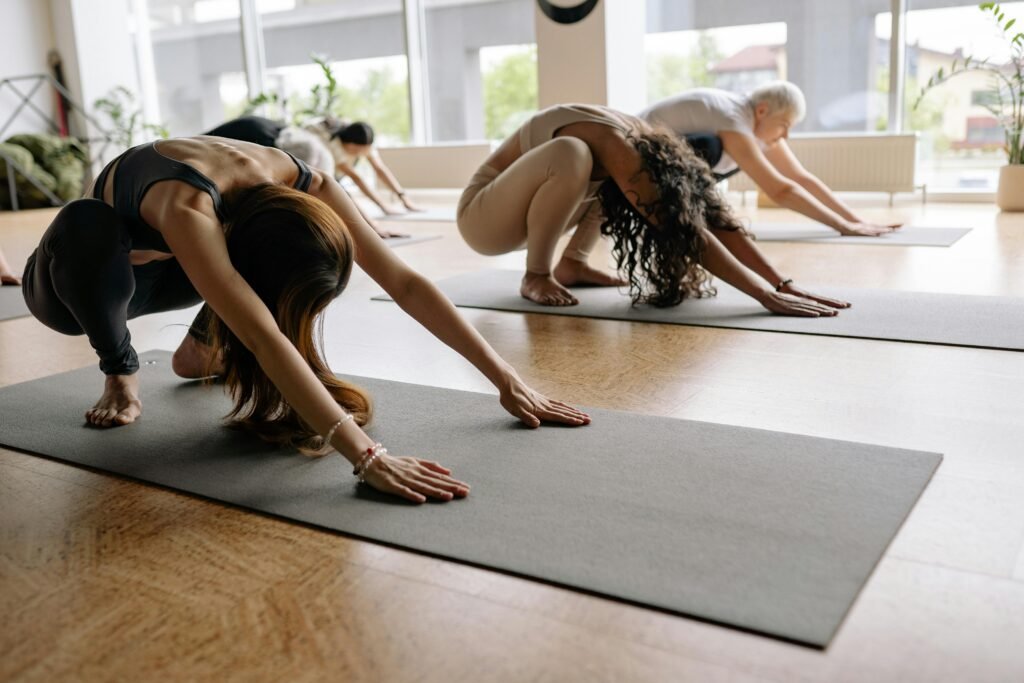






[…] READ about “SANSKRIT NAMES FOR YOGA POSES: SANSKRIT YOGA TERMS” […]